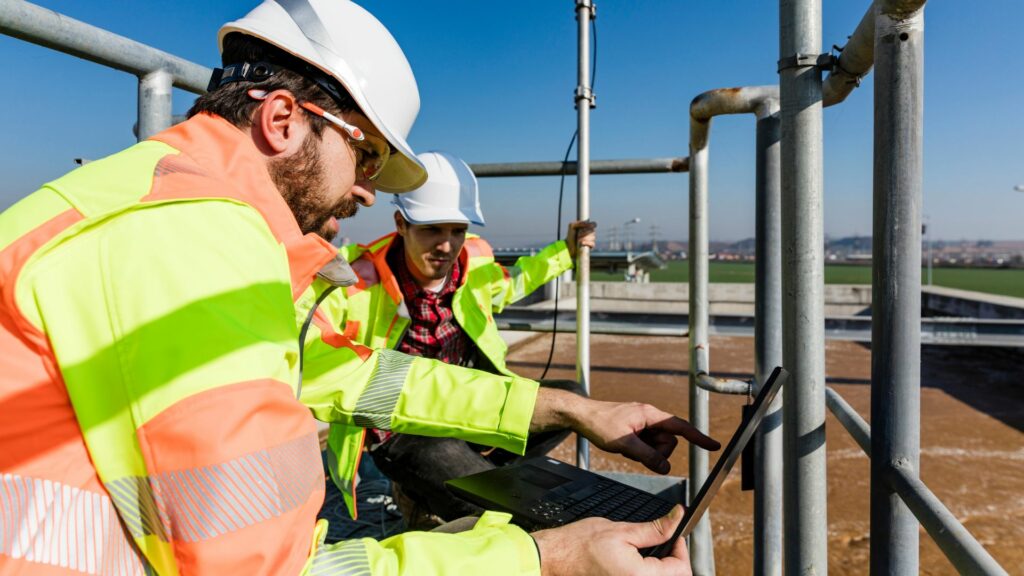Humans have been using their intelligence for centuries to solve everyday problems and make life easier. Engineering involves the conception, design, and construction of things that solve life’s issues and transform the world as we know it.
Civil engineering entails designing and constructing structures such as dams, bridges, airports, sewerage, and commercial projects in the physical environment. This article will discuss the different kinds of projects in civil engineering.
Table of Contents
What is civil engineering?
Civil engineering is an engineering discipline that deals with the design, construction, and maintenance of the built environment. The structures involved include roads, canals, bridges, sewerage systems, buildings, and airports.
Civil engineering is considered the oldest engineering discipline. Consider the fact that the first person ever to lay a tree trunk across a river to act as a bridge applied civil engineering to that idea. Civil engineering is dated as early as when someone built a roof over their head.
Modern civilization is built around the built environment. Buildings and constructions are thus the first things that come to mind when the average person thinks about civil engineering. However, civil engineering is not limited to magnificent buildings like the Central Park Tower and the Shanghai Tower or Japan’s Akashi Kaikyo bridge.
Civil engineers are familiar with the construction industry because they design and construct buildings. However, they also operate in other sectors such as the power, automotive, aerospace, shipbuilding, and transportation industries, to name a few. Civil engineers also play the role of construction managers, planning and overseeing construction in various facilities.
Different types of civil engineering
Civil engineering involves more than constructing roads and bridges. It encompasses the construction of subway systems, roads, airports, and railways. Civil engineering makes it possible to get water from a faucet and pour it down the drain without flooding your house. There are several types of civil engineering. These are:

Water engineering
Water engineering is the sub-discipline of civil engineering that deals with water-based projects. Water engineering covers water treatment, wastewater management, and water infrastructure development. Water engineering is significant because water sustains all life, and protecting natural water resources is key to earth’s sustainability: humans and nature cannot survive without water.
Water engineering is critical in today’s world because it provides the expertise and innovation needed to mitigate the challenges presented by climate change and an aging population. There are a lot of exciting water engineering projects that have made and will continue to make a real impact on the survival of the planet.
Construction and management engineering
Construction and management engineering is a fusion of engineering and construction management. It is, therefore, the sub-discipline of civil engineering that provides oversight on actual construction. It deals with applying technical and scientific knowledge to infrastructure construction projects.
Construction and management engineering aims to apply critical thinking in the technical field to enhance a construction project. Construction and management engineers are strategic leaders who design and execute innovative solutions to solve challenges and boost efficiency. They not only increase productivity but also help avert risks during construction.
Geotechnical engineering
Geotechnical engineering is the sub-discipline of civil engineering that deals with the soil’s strength and deformation properties. Geotechnical engineers study sand, clay, rocks, silt, and snow. This field involves collecting samples from and analyzing the physical properties of the ground to be used in building and construction.
Geotechnical engineering is helpful in the transport industry as geotechnics is a critical consideration when planning the construction of roads and tunnels. Similarly, geotechnics is applied when planning the construction of buildings and other structures (such as bridges) both on land and water.

Transport engineering
Transportation engineering deals with the planning, design, operation, and maintenance of transport systems. Transport systems include railways, oil pipelines, automated transport systems, roads, and traffic control systems. Transportation engineering builds and maintains any system that allows the movement of people or goods from one place to another.
Infrastructure engineering
Infrastructure engineering deals with IT infrastructure to ensure IT systems’ robustness, efficiency, and sustainability. IT infrastructure relies on the underlying physical environment. Infrastructure engineers are responsible for ensuring that the physical environment supports the resources, processes, and operators required to develop, operate, integrate, and sustain IT applications and services.
Summary
Civil engineering is responsible for most of the structures we see daily. The most popular subdivision of civil engineering is structural engineering because this is the subdivision that designs and constructs buildings and bridges.
The other main types of civil engineering are water engineering, transport engineering, construction, and management engineering, geotechnical engineering, and infrastructure engineering. Civil engineering is a part of our daily lives, from the water faucet in the kitchen and the roads we use to get to work to the majestic Central Park Tower.

